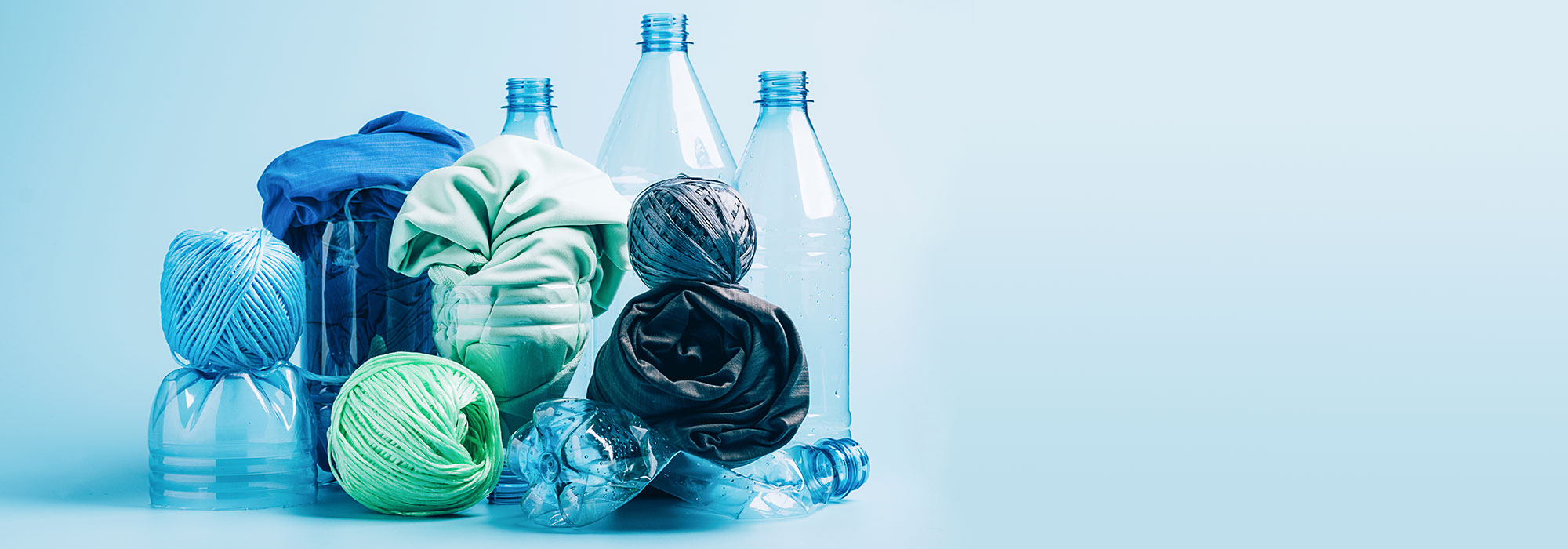Remember: in March 2022, the European Union revealed its strategy around a key theme – sustainable and circular textiles.
The aim? To make the textile industry “greener”. To get there, the measures must factor in the whole of the product life cycle (clothing, linens, luggage, and accessories).
The main requirements include:
- regulated working conditions throughout the manufacturing and distribution process
- transparency towards the end consumer
- strict checks on all production and treatment processes as well as waste management.
Not to mention one of the aspects we’re going to explore in this article: the proportion of recycled fibres in the composition of textile products. This helps to prevent the over-consumption of raw materials by reusing pre-existing materials.
The ambition is fully in line with the IPCC’s 2022 report, which set out a list of actions aiming to reduce the carbon footprint for each line of business. Industry – and therefore textiles – is included and called on to “favour more sustainable materials, recycling and waste reduction” (Source: Ecocert |New IPCC report: the CLIMATE solutions we need – April 2022)
To ensure that the efforts made by the various players are coherent and truly effective, they must meet strict specifications, monitored by independent, neutral and objective bodies.
This is where certification comes in, which is our theme for today. That is, RCS and GRS certifications which cover the use of recycled materials in the textile world and more. Here’s what you need to know!
Recycled materials – a hot topic
A few key figures
- Europeans now throw away 11 kg of textiles every year. Worldwide, the equivalent of a lorry full of textiles is discarded every second.
- Let’s also consider that more than half of global textile fibres produced in 2020 were in polyester, derived from a non-renewable source: petroleum.
- Finally, consumption of textile products is set to increase by more than 60% by 2030.
A sad state of affairs that is forcing the various textile players to find and, more importantly, adopt solutions that are truly more sustainable. One of these solutions is to recycle pre-existing materials, which were initially meant to be discarded.
Certification will guide us through this transition by confirming a tangible and verifiable approach, monitored by an impartial third-party body.
Who develops, promotes and updates certification?
In this case, it’s Textile Exchange, a global non-profit organisation which works to sustainably and positively transform the textile industry. To do so, their programme comprises various standards, including RCS and GRS. The members and ambassadors of Textile Exchange meet during committees and conferences or around round tables to jointly fine-tune the role of these certifications throughout the chain, their differences, their areas of application, the use of their logos, etc.
These certifications cover the materials, transformation, traceability and end-of-life of products in the textile industry.
Finally, all of Textile Exchange’s reflections work towards a key objective: to have a positive impact on water, soil, air, animals and the human population.
Who monitors the compliance of actions taken during a certification process?
To ensure that the rules are followed for each of these certifications, Textile Exchange gives accreditation to certification bodies. One such example is Ecocert, a French environmental labelling leader which TopTex and KARIBAN BRANDS have chosen to lead their certification projects.
What is the aim of RCS certification?
For whom and for what?
RCS (Recycled Claim Standard) certification can apply to textile players which produce, weave, dye and distribute, as well as to companies which recycle and transform recycled materials. This label allows them to sell products made with at least 5% recycled materials.
The main objective?
The main aim is to guarantee the traceability of recycled raw materials throughout the production, supply and distribution chain.
How?
The presence and amount of recycled material in the composition of a finished product are monitored by an independent third-party body.
What does RCS certification guarantee?
-
The presence and traceability of recycled raw materials
-
Transparency via labelling of the products in question
-
The commitment of all stakeholders
Once the checks are carried out and confirmed by an approved certification body, such as Ecocert, the RCS logo can be used on the product in question. There are two levels:
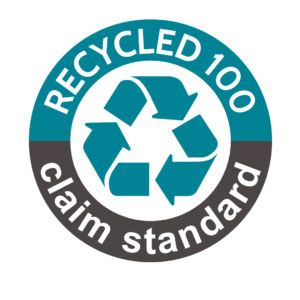
Level 1: RCS 100
The product contains at least 95% recycled materials

Level 2: RCS blended
The product contains between 5 and 95% recycled materials
KEY POINTS
RCS certification attests to the presence, amount and traceability of the recycled materials in the product with the help of an independent certification body.
There are two levels of RCS certification depending on whether the finished product contains more or less than 95% recycled materials.
For more information, visit the Ecocert site or the Textile Exchange site
TopTex’s RCS certified selection

K6152
Unisex eco-friendly long sleeve t-shirt – WK. Designed to Work

K6152
Unisex eco-friendly long sleeve t-shirt – WK. Designed to Work

K980
Men’s eco-friendly V-neck jumper – Kariban
What is the aim of GRS certification?
For whom and for what?
GRS (Global Recycled Standard) certification is more comprehensive in the sense that it certifies the recycled materials in a product while including strict environmental and social dimensions in its specifications. Initially created by Control Union, it has been owned by the Textile Exchange since 2011 and is updated around every three to five years. The current version, 4.0, has been in force since 2017.
The main objective?
The main aim is to increase the use of recycled materials in a finished product while monitoring social and environmental practices throughout the manufacturing process.
How?
The presence and amount of recycled inputs, the absence of toxic chemical products and respect for fundamental workers’ rights are monitored by an independent third-party body.
What does GRS certification guarantee?
-
At least 20% recycled materials
-
A material that has genuinely been recycled as opposed to new products manufactured with the sole aim of being directly recycled
-
Responsible procedures: production, water treatment, waste management
-
Respect for fundamental workers’ rights
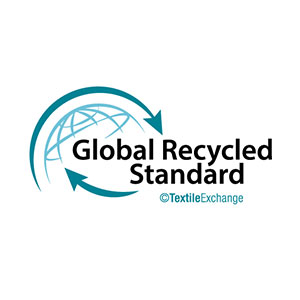
The GRS standard
The product contains at least 20% recycled materials and must contain at least 50% to use the GRS logo
KEY POINTS
GRS certification may involve a finished product that contains at least 20% recycled materials
the production and treatment (water and waste) processes must be carried out sustainably and in line with the requirements of the GRS specifications
this standard refers to products containing at least 20% recycled materials but to include the logo on a product label, it must contain at least 50%
For more information, visit the Ecocert site or the Textile Exchange site
TopTex’s GRS certified selection

K427
Unisex eco-friendly 3-layer softshell jacket – Kariban
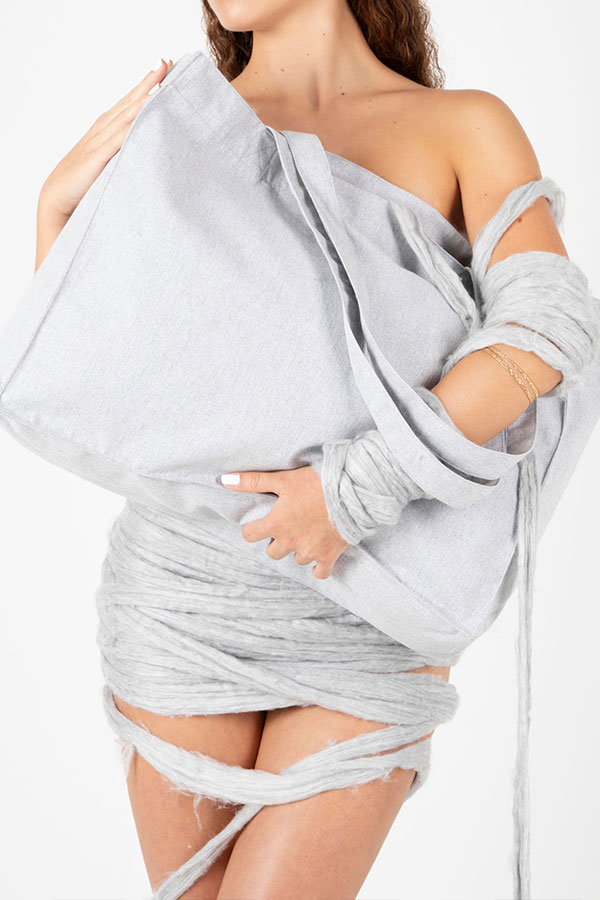
KI5227
Large K-loop shopping bag – Kimood

The voluntary commitment of TopTex and KARIBAN BRANDS
Increasing numbers of textile players are becoming aware of the need to implement sustainable initiatives to bring about truly significant changes.
In this respect, recycled materials are more crucial than ever to the environmental concerns that TopTex and KARIBAN BRANDS are committed to help tackle.
Like for GOTS and OCS certification that we discussed in another article, Textile Exchange has not made certification compulsory. Each textile distributor or brand is free to lead a certification project if they wish to communicate on this matter.
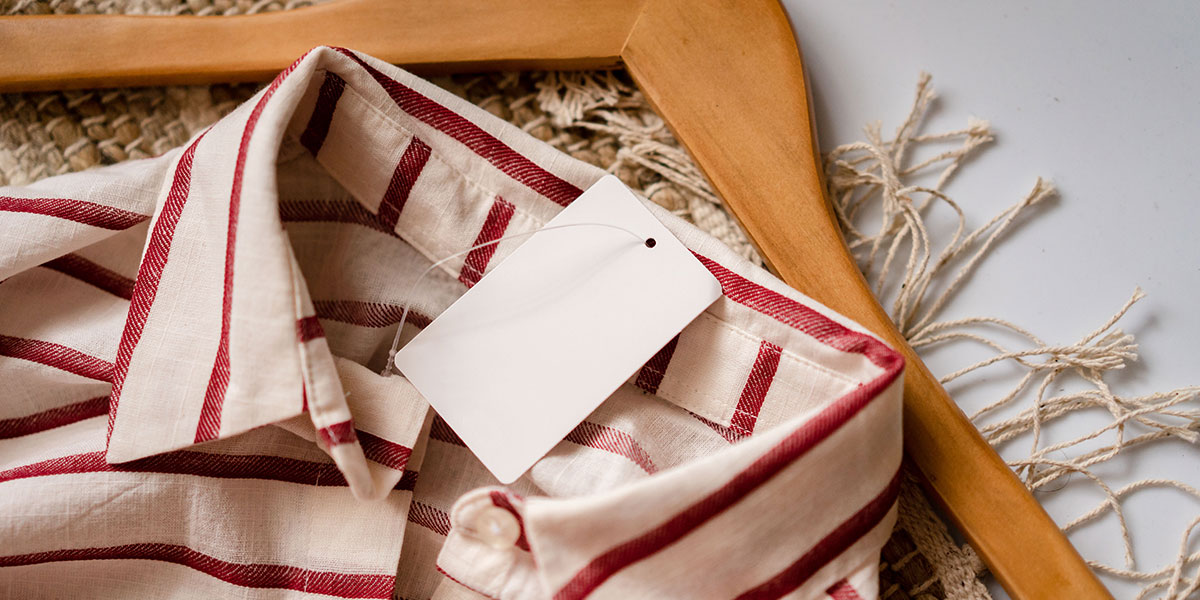
Therefore, it is a voluntary approach by textile players which must be implemented with supervision from an independent certification body.
For example, KARIBAN BRANDS as a brand, and ourselves, TopTex, as a distributor, each lead certification projects with support from Ecocert. They are by our side to monitor and certify compliance with RCS and GRS standards.
Therefore entities are awarded certification on an individual basis and provided with a unique registration number (EGL). TopTex and KARIBAN BRANDS numbers for RCS and GRS certification:
RCS certification
Examples of awarded certification
TopTex France


KARIBAN France


GRS certification
Examples of awarded certification
TopTex France

KARIBAN France

To see the items with RCS or GRS certification on our site, visit one of the sections (Clothing, Luggage, Workwear, Sports, etc.), then apply the “Recycled” filter to display the products made with recycled materials and those with RCS or GRS certification.
Ever more recycled materials
We have discussed the findings and RCS and GRS certifications. However we have not yet addressed the various materials that may be recycled, or their origin!
As with many other textile fibres, there are two categories:
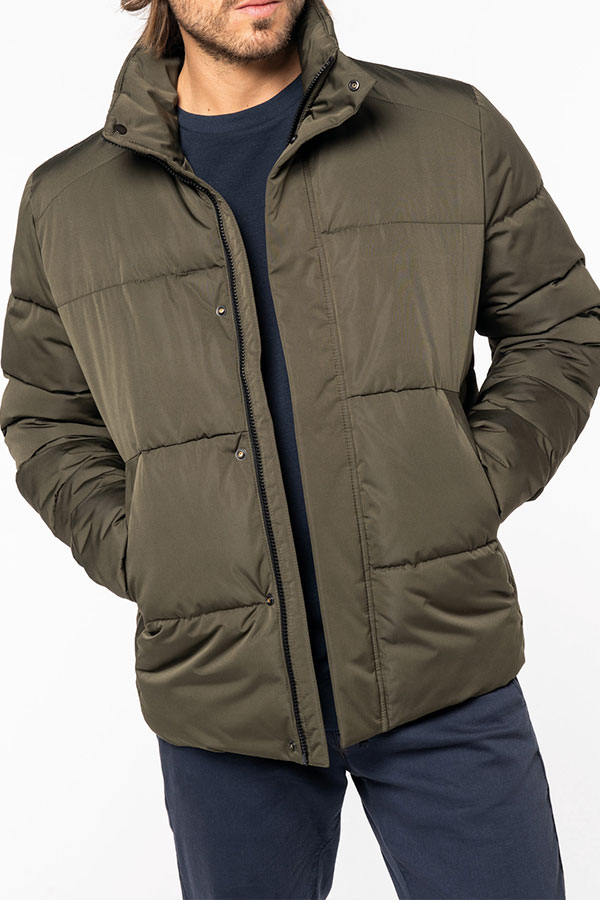
Synthetic fibres
It is possible to recycle plastic bottles, which are then transformed into recycled PET.
However, these can be materials derived from petroleum, such as polyester and elastane. Once shredded and melted, these materials will be transformed into yarns, which can then be woven.
Natural fibres
Here, this mainly involves cotton. This is THE most commonly used material in the textile world. These scraps can then be recovered, shredded and once again transformed into fibres. Once twisted, they can be woven again to create new pieces!

Why use recycled fibres?
To use existing materials which prevent the over-consumption of raw materials, especially when they are non-renewable
To minimise water and energy consumption (more important in a polyester manufacturing process, for example, than when it is recycled)
To reduce the carbon footprint and environmental impact, e.g. for cotton growing which uses particularly large amounts of water and pesticides
To reduce the amount of waste, and discarded and incinerated materials.
Where do the recycled materials in new textiles come from?
There are two possible origins:
- pre-consumer: mostly fabric scraps unused by workshops. Indeed, when a garment is cut in a precise shape from a rectangle of fabric, there are inevitably material leftovers. The term “pre-consumer” is used simply because these fabrics have never been used by consumers.
- post-consumer: this time, the textiles or waste have been used and recovered from sorting or collection centres, for example. The plastic bottles discussed earlier fit into this category, provided they have genuinely been used ahead of the recycling process.
As you would expect, ever more recycling commitments are emerging and continuously developing in the textile world. It is most important that we focus our efforts on recognised and regulated labels and standards. Which is the case for RCS and GRS certifications!
We’re reaching the end of our article on recycled material certifications: we hope that it was informative and that you’ve gained a better understanding of the scopes of the RCS and GRS labels.
At TopTex, we will continue to roll out as many initiatives as possible to support the combined effort to transition to more sustainable and more responsible fashion. This long and sometimes winding road is in constant (r)evolution with cherished approaches that will remain a key concern for us.
Use the filters on our site to view the products made from recycled materials. You can identify the products with RCS and GRS certifications thanks to the logos on their product data sheets.
Be sure to reach out if you have any questions or would like guidance from our experts to provide your customers with an eco-friendly selection!



